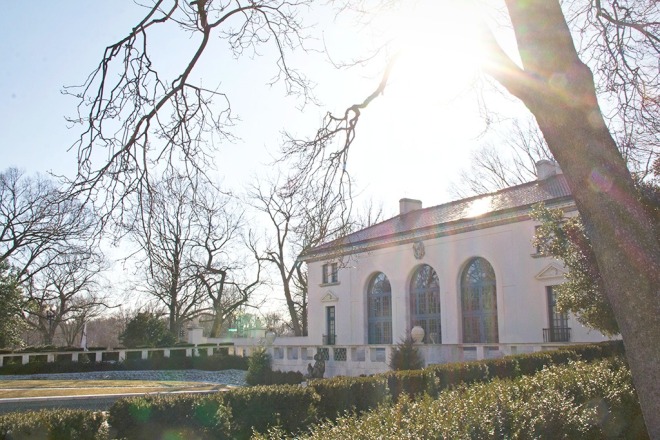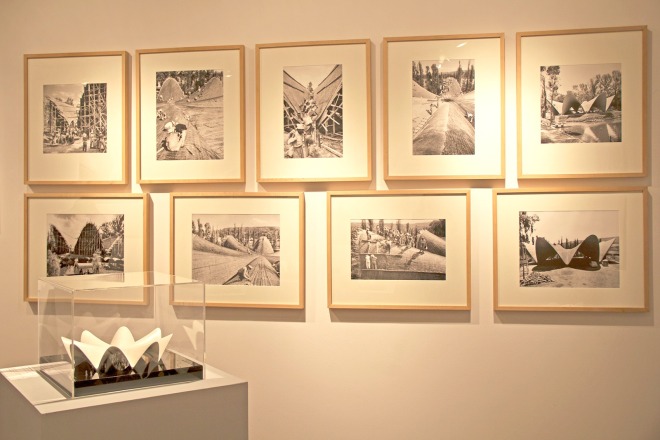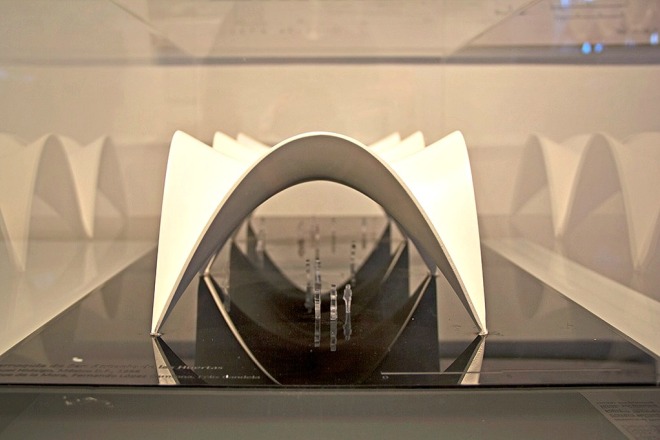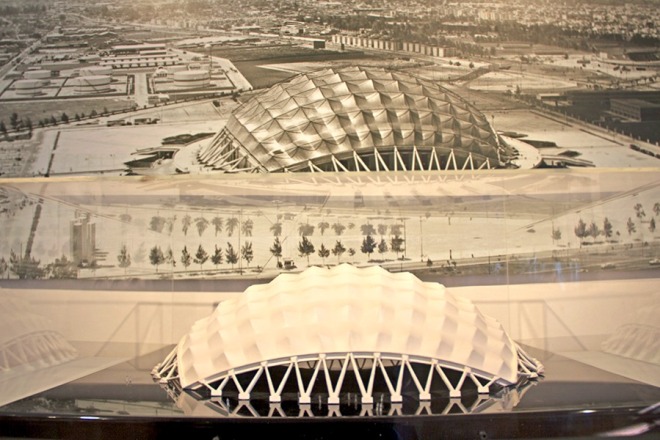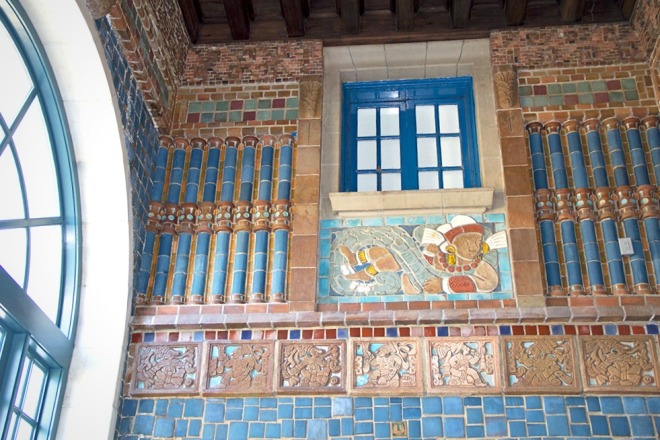A small museum has many virtues. Free of an overwhelming collection, the viewer can enjoy exhibits with ease taking the time to absorb each object label. Rather than cramming a visit with “must-see” pieces, I find smaller museums often afford the most memorable and surprising experiences.
Washington, D.C.’s Art Museum of the Americas (AMA) is one such space. Established in 1976, the AMA primarily features Latin American and Caribbean artists who “creatively combine aesthetics with topical social and political issues.” AMA’s collection has grown from 250 to nearly 2,000 pieces in a variety of media since its founding.
Experimental Structures
I was fortunate to visit the AMA on the last day of Candela’s Shells: The Reinforced Concrete Shells of Spanish-Mexican Architect Félix Candela. The other galleries were closed, giving me the necessary focus to process Candela’s hyperbolic parabloids. His whimsical shell-like structures land somewhere between elegant, naturally occurring shapes and imports from outer space.
He was not the first to experiment with such structures, but Candela pushed the form to achieve unprecedented concrete results in the 1950’s and ‘60s. While the Spanish-born architect erected work all over the world, this exhibition focused primarily on his Mexican projects, including the Palacio de los Deportes for the 1968 Olympics in Mexico City. I was surprised to find a number of his unconventional designs were commissioned for churches. A quote by Candela described this as a fitting match due to the need to surrender reason and embrace imagination in communicating with the divine.
According to the exhibit, Candela’s philosophy was based on the premises of economy, simplicity, and flexibility in calculation. Photos of the building process highlighted both the intricacy of work required to form the framework and the straightforwardness of a building emerging from an assembly line of concrete buckets. Candela is regarded as a predecessor to many contemporary architects and to sustainable architectural design. It was delightful to watch his work unfold throughout the exhibit, pushing the precepts of architecture at the time and conveying powerful, playful emotion with deceptively minimal design.

“Candela’s work continues delighting, at the same time serving as a provocation to refresh our beliefs about structure and architecture.” – Guy Nordenson
Hidden Splendor
One more surprise awaited us at the AMA. The Spanish colonial building designed by Paul Crét is a companion to the Organization of American States (OAS) headquarters, located across a charming courtyard. When we asked the sole attendant about the “blue room” we had heard about, he smiled and led us through a closed gallery to a light flooded loggia. The afternoon sun played off of the bright, glossy tile work as we admired the Mayan influenced patterns. Here in the heart of the nation’s capital, we reveled in modern and ancient inspiration in a museum all to ourselves.
Art Museum of the Americas
201 18th St.
Washington, DC 20006
Admission: Donation encouraged

Jessica Mlinaric founded Urban Explorer in 2010 to inspire curious travelers by highlighting history, culture, and hidden gems in Chicago and beyond. She is the author of ‘Secret Chicago’ and ‘Chicago Scavenger,’ and she has contributed to several travel guidebooks. Jessica has visited 20+ countries and 30+ U.S. states. She has more than 16 years of experience as a marketing strategist and works as a freelance writer and photographer.


